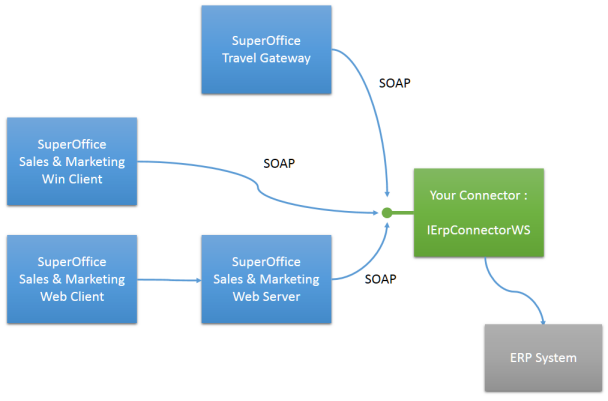SOAP Sync Service

Implementing the SOAP service API directly removes any .Net dependencies. You can implement the IErpConnectorWS SOAP Service API directly from Java or PHP.
The SOAP API is very similar to the .Net API, just a bit more house-keeping to take care of.
For example: when working with the SOAP API, each connection is represented by a different GUID. You will need to find the configuration data associated with the GUID yourself.
Here is a snippet from the SDK sample ExcelErpSyncConnector where the Filename parameter is saved and mapped to the GUID for the connection.
public ConnectorResultBaseWS WSSaveConnection(SaveConnectionRequestWS request)
{
var result = new ConnectorResultBaseWS();
result.IsOk = request.ConnectionInfo.ContainsKey("Filename");
result.State = result.IsOk ? ResponseStateWS.Ok : ResponseStateWS.Error;
result.UserExplanation = result.IsOk ? "" : "Filename is missing.";
if (result.IsOk)
{
string connectionGuid = request.ConnectionGuid;
string filename = request.ConnectionInfo["Filename"];
Connection.AddConnection(connectionGuid, filename);
}
return result;
}
The SuperOffice client will call the WSSaveConnection SOAP web-service end-point directly. WCF will dispatch the call to this method.
The request parameter contains the ConnectionGuid property, which identifies this connection. The method must save the configuration values for the connection (passed via the ConnectionInfo dictionary) somewhere it can find it again later. Subsequent calls to the web service will not pass in the ConnectionInfo dictionary, just the ConnectionGuid.